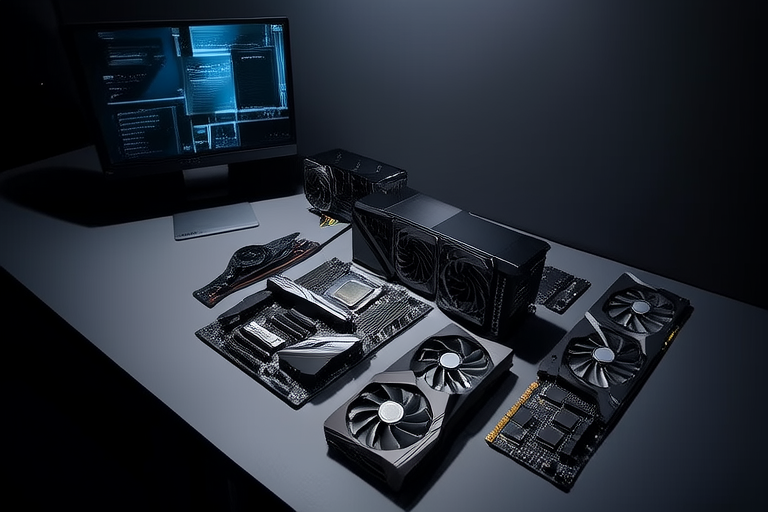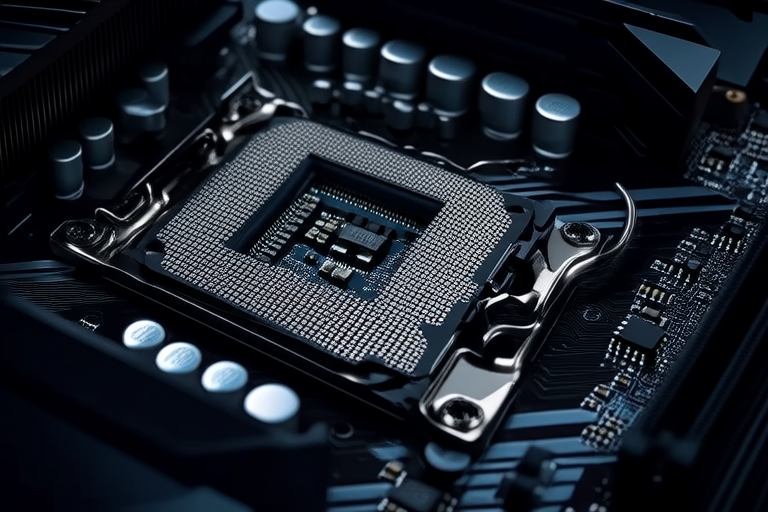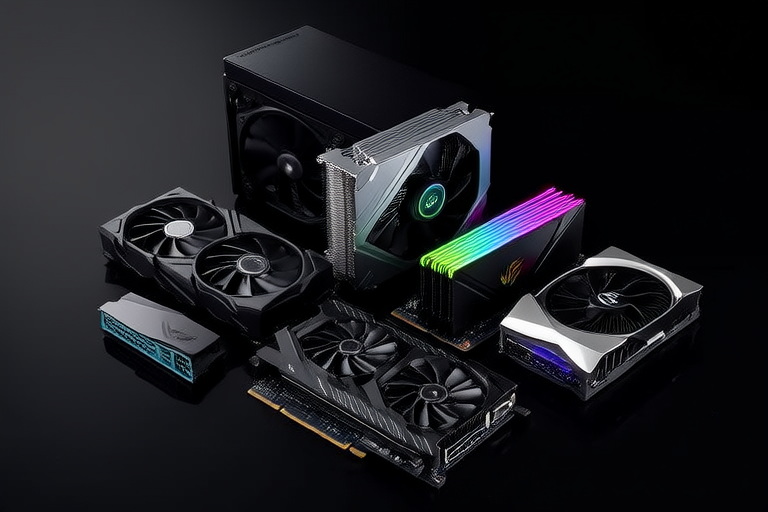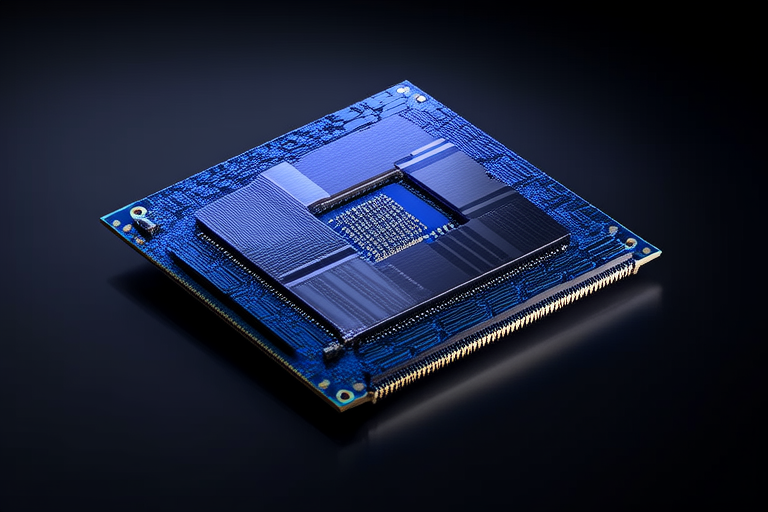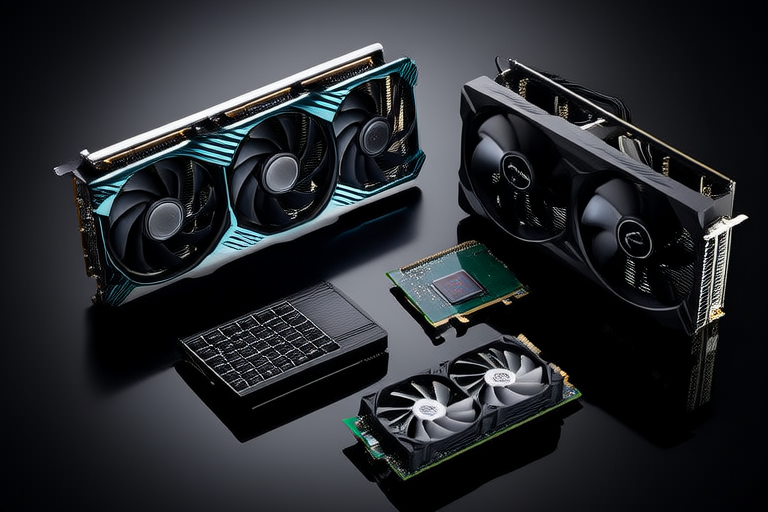The Ultimate Guide to Building Your Dream PC: Hardware Essentials
Introduction: Why Build Your Own PC?
Building your own PC offers unparalleled flexibility, customization, and performance tailored to your specific needs. Whether you’re a gamer seeking top-tier graphics, a content creator requiring robust processing power, or a professional needing reliable multitasking capabilities, assembling your own machine ensures that every component aligns with your goals. Beyond the satisfaction of creating something from scratch, building a PC allows you to control costs, prioritize features, and future-proof your system for years to come.
The CPU: The Brain of Your System
The Central Processing Unit (CPU) is the heart of your PC, responsible for executing instructions and managing tasks. Choosing the right CPU depends on your intended use case, budget, and compatibility with other components.
- Performance: High core counts and clock speeds are ideal for demanding applications like gaming, video editing, and 3D rendering. For general use, a mid-range CPU will suffice.
- Compatibility: Ensure the CPU socket type matches your motherboard. Intel and AMD are the two primary manufacturers, each offering unique advantages in performance and pricing.
- Budget Considerations: While flagship CPUs deliver exceptional performance, they may not always provide the best value. Mid-tier options often strike a balance between cost and capability.
Tip: Look for CPUs with integrated graphics if you’re not planning to use a dedicated GPU immediately, as this can save costs during initial setup.
The GPU: Powering Visual Performance
The Graphics Processing Unit (GPU) handles rendering images, animations, and video for your display. It’s especially critical for gamers, designers, and anyone working with visually intensive software.
- Performance: High-end GPUs excel in gaming at 4K resolution and running complex simulations or AI workloads. Entry-level GPUs are suitable for casual gaming and light multimedia tasks.
- Compatibility: Verify that your motherboard has the appropriate PCIe slot and that your case accommodates the GPU’s physical size.
- Budget Considerations: Prices vary significantly across models. Research benchmarks to determine which GPU offers the best performance per dollar.
Tip: Pay attention to VRAM (video memory), as insufficient amounts can bottleneck performance in graphically demanding scenarios.
The Motherboard: The Foundation of Connectivity
The motherboard connects all components, serving as the central hub for data transfer and communication. Selecting the right motherboard ensures seamless integration and optimal functionality.
- Form Factor: Choose between ATX, Micro-ATX, and Mini-ITX based on your case size and expansion needs. Larger boards offer more slots and ports but require bigger cases.
- Features: Look for features like Wi-Fi, Bluetooth, USB-C ports, and advanced audio solutions depending on your requirements.
- Compatibility: Match the motherboard’s chipset and socket type with your chosen CPU. Also, ensure it supports your desired RAM type and capacity.
Tip: Invest in a motherboard with extra PCIe slots if you plan to add multiple GPUs or expansion cards in the future.
RAM: Fueling Multitasking Efficiency
Random Access Memory (RAM) temporarily stores data that the CPU needs quickly. Adequate RAM ensures smooth multitasking and responsive performance.
- Capacity: For most users, 16GB is sufficient, while professionals and gamers may benefit from 32GB or more.
- Speed: Measured in MHz, faster RAM improves performance in certain applications but comes at a premium.
- Compatibility: Check your motherboard’s supported RAM type (DDR4 or DDR5) and maximum capacity.
Tip: Opt for dual-channel configurations by installing RAM sticks in pairs to maximize bandwidth and performance.
Storage: Balancing Speed and Capacity
Storage solutions include Solid-State Drives (SSDs) and Hard Disk Drives (HDDs). SSDs provide lightning-fast read/write speeds, while HDDs offer larger capacities at lower costs.
- SSDs: Ideal for operating systems, games, and frequently accessed files due to their speed. NVMe SSDs are even faster than SATA variants.
- HDDs: Suitable for bulk storage of media files, backups, and less frequently accessed data.
- Hybrid Approach: Combining an SSD for essential programs and an HDD for additional storage often provides the best balance.
Tip: Allocate enough space for your OS, applications, and anticipated file growth when selecting storage sizes.
Power Supply: Delivering Reliable Energy
The Power Supply Unit (PSU) converts electricity from your outlet into usable power for your components. A reliable PSU is crucial for stability and longevity.
- Wattage: Calculate the total power consumption of your components and choose a PSU with some headroom (e.g., 80% load).
- Certification: Look for 80 Plus ratings (Bronze, Silver, Gold, etc.) indicating efficiency and quality.
- Modularity: Modular PSUs allow you to connect only the cables you need, improving airflow and cable management.
Tip: Avoid cheap, unbranded PSUs, as they can fail prematurely and damage other components.
Cooling Solutions: Keeping Temperatures in Check
Effective cooling prevents overheating and maintains consistent performance. Options range from air coolers to liquid cooling systems.
- Air Coolers: Cost-effective and easy to install, these are suitable for most builds unless extreme overclocking is planned.
- Liquid Coolers: Offer superior cooling performance and quieter operation, ideal for high-performance setups.
- Case Fans: Additional fans improve airflow within the case, enhancing overall cooling efficiency.
Tip: Ensure your case has adequate space and mounting points for your chosen cooling solution.
The Case: Housing Your Masterpiece
The PC case protects your components and influences airflow, aesthetics, and ease of assembly.
- Size: Match the case form factor with your motherboard (ATX, Micro-ATX, Mini-ITX).
- Airflow: Cases with good ventilation and dust filters help maintain optimal temperatures.
- Aesthetics: Choose a design and color scheme that reflects your style, considering factors like tempered glass panels and RGB lighting.
Tip: Prioritize build quality and accessibility of drive bays and cable routing options for easier maintenance.
Conclusion: Striking the Right Balance
Building your dream PC requires careful consideration of each hardware component. By understanding the role of the CPU, GPU, motherboard, RAM, storage, power supply, cooling solutions, and case, you can make informed decisions that align with your goals. Remember to balance cost, quality, and future-proofing—prioritize components that meet your immediate needs while leaving room for upgrades. With thoughtful planning and attention to detail, you’ll create a high-performance machine tailored precisely to your vision.
